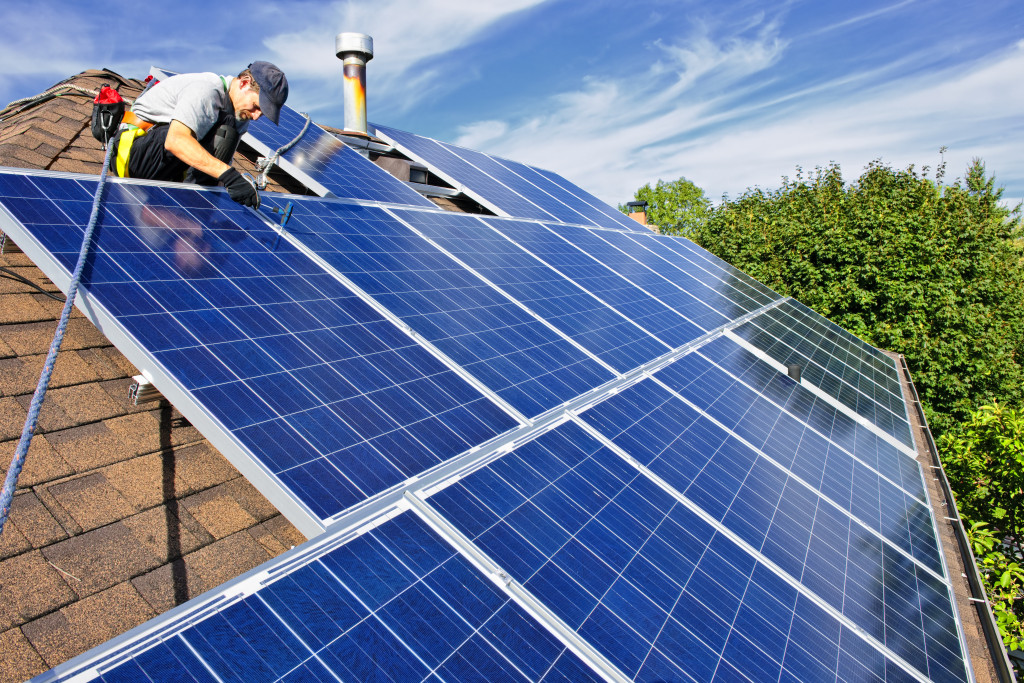Sustainability is becoming a more and more critical issue as we become increasingly aware of the impact that our actions have on the environment. Especially in the home, there are many things we can do to reduce our impact and make our homes more sustainable. This article will discuss some of the most effective ways to make your old home more sustainable to help protect the environment.
1. Use energy-efficient appliances and fixtures.
One of the best ways to make your home more sustainable is to use energy-efficient appliances and fixtures. Products like ENERGY STAR-certified appliances can help you save money on your energy bills while reducing the carbon footprint of your home.
You might want to consider other energy-efficient fixtures, including ceiling fans, smart thermostats, and LED light bulbs. Most modern appliances also have energy-saving settings that you can take advantage of.
2. Insulate your home correctly.
Another essential step in making an older house more sustainable is ensuring that your home is adequately insulated. Poorly insulated homes are less energy-efficient and can be more expensive to heat and cool.
There are a few different ways to insulate your house, such as using weather stripping, caulking, and adding insulation to your walls, ceilings, and floors. You can work with a home insulation company to find the best way to insulate your particular home.
3. Upgrade your windows.
If your home has old, drafty windows, it’s time to upgrade them. Not only will new windows help improve your home’s energy efficiency, but they can also help reduce your carbon footprint by cutting down on air leakage.
Look for windows made with durable and energy-efficient materials like vinyl or wood composite. If you’re replacing many windows at once, consider opting for double- or triple-paned glass to improve your home’s energy efficiency further.
4. Install a smart water filtration system.
Tap water can contain many harmful contaminants, including lead and chlorine. If you have old, outdated water filtration systems in your home, it’s time to replace them. A smart water filtration system will not only provide you with cleaner water but can also help save energy by reducing your reliance on bottled water. You can also install water-saving fixtures like low-flow showerheads and faucets to help reduce your home’s water usage.
5. Consider solar power.
Solar power is an excellent option if you’re looking for a more long-term solution to making your home more sustainable. Solar panels can help you save money on your energy bills while reducing your carbon footprint. Solar power is a renewable energy source, so it’s a great way to reduce your reliance on fossil fuels.
Many different solar power options are available, from small solar panels that can power a few appliances to large solar arrays that can power your entire home. Although solar panels are a bit expensive up front, they can save you money in the long run and help make your home more sustainable.

6. Use sustainable building materials.
When making improvements to your home, try to use sustainable building materials whenever possible. Materials like bamboo, cork, and recycled glass can be used in various home improvement projects, from flooring to countertops.
Sustainable building materials are often just as durable and attractive as traditional materials, but they have a lower environmental impact. Using sustainable materials whenever possible is a great way to help make your home more sustainable and environmentally friendly.
7. Consider a home energy audit.
One of the best ways to make an older home more sustainable is to have it professionally assessed by an energy auditor. A home energy audit will identify ways to improve your home’s energy efficiency, such as sealing air leaks and insulating your walls and ceilings.
An energy audit can also help you pinpoint areas where your home is wasting energy, such as if your furnace is too big for your home or if your windows are outdated. Having an energy audit is a great way to make your home more sustainable.
8. Bring in some plants.
Plants help improve your home’s air quality, and they can also help you save energy. Plants help cool your home by evaporating water, and they can also help reduce noise pollution. Adding some plants to your home should be crucial for your sustainability strategy.
9. Educate yourself and your family about sustainability.
One of the best ways to make your home more sustainable is to educate yourself and your family about sustainability. Read up on green living tips and share this information with others in your household.
Learning about sustainability can help you make more environmentally friendly decisions for your home. It can also help encourage others in your household to adopt more sustainable behaviors. With a little research and education, you can easily make your home more sustainable for years to come.
Sustainability is important for both the environment and our wallets. Making your home more sustainable can save you money on your energy bills, and it can also help reduce your carbon footprint.
If you’re looking for ways to make your home more sustainable, the tips mentioned above should help you get started. Always remember that even small changes can make a big difference when it comes to sustainability.



